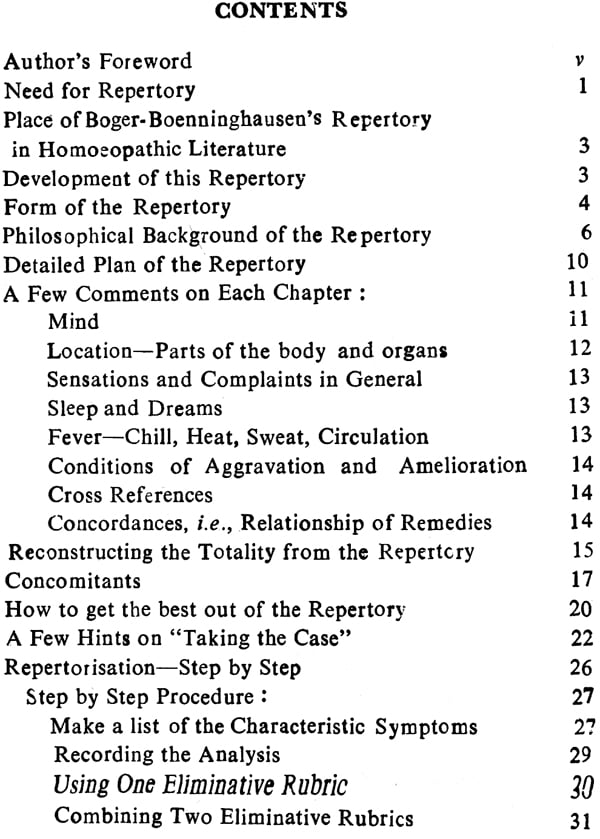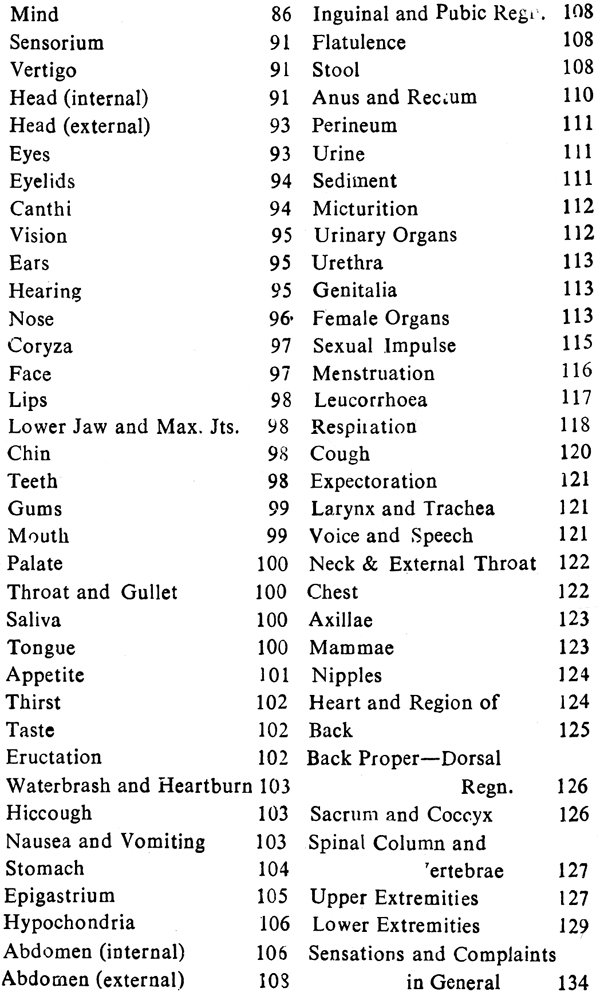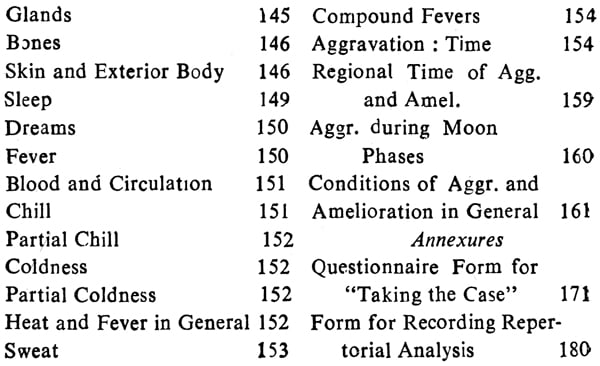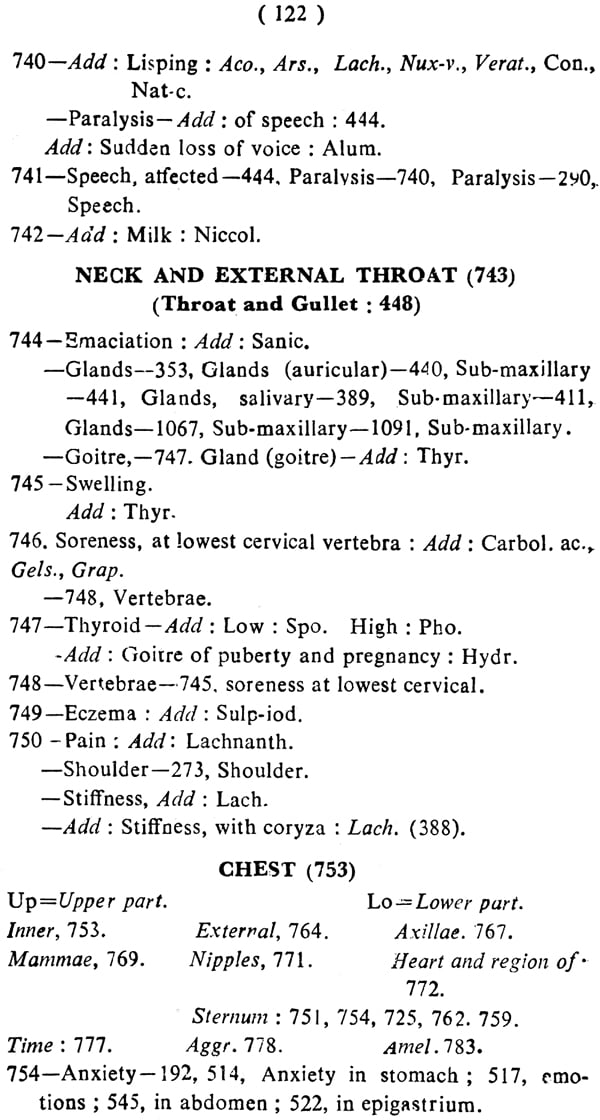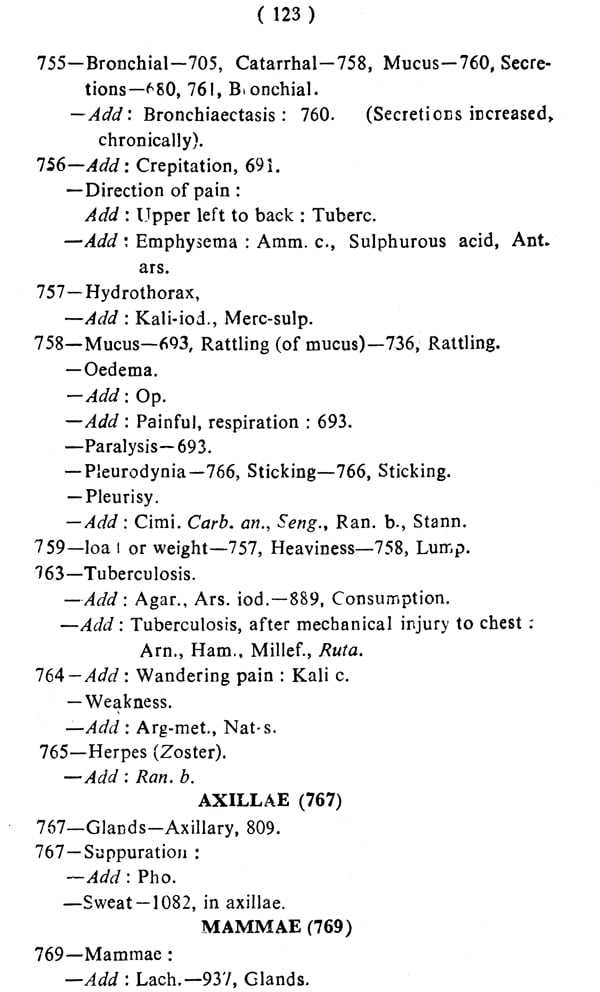
How to Find the Simillimum with Boger-Boenninghausen's Repertory
Book Specification
| Item Code: | NAS291 |
| Author: | Bhanu D. Desai |
| Publisher: | B. Jain Publishers (P) Ltd |
| Language: | English |
| Edition: | 2017 |
| ISBN: | 9788131943991 |
| Pages: | 187 |
| Cover: | PAPERBACK |
| Other Details | 8.50 X 5.50 inch |
| Weight | 270 gm |
Book Description
Of the Repertories in the hands of the profession today, the "Boger is the subject of this little booklet. It is unfortunate that though it is second to none in its practical utility, it appears to have been comparatively neglected. The aim of this book is to provide an impetus to a wider circle for Homoeopaths to discover for themselves its immense value as an unfailing aid in finding the simillimum. A detailed description of the structure, organization and practical use of the repertory, including points of comparison with Kent's repertory, repertorisation examples for sample cases and rubric cross references. The book also briefs about the need for BBCR repertory. A few comments on each chapter such as Mind - Location, Parts of the body and organs - Sleep and Dreams - Fever, Chill, Heat, Sweat, Circulation; have been added for better understanding of the work. L
It gives me great pleasure to find that this book is going into its second edition within two years. This opportunity has been taken to correct errors and omissions and bring the book up-to-date. I would like once again to express my conviction, born of experience of myself and some colleagues, that constant use of Boger-Bonninghansen’s Repertory, in acute as well as chronic cases, can be a valuable and unfailing aid in finding the similimum. May the number of prescribers who . use this Repertory grow and may they raise high the banner of Hahne- mannian Homoeopathy.
Every Homoeopath dreams of prescribing the curative remedy in every case of illness that comes to him so as to attain Hahnemann’s highest ideal of cure, viz,a rapid, genile and permanent restoration of health—and to find that remedy easily and quickly. Finding the simillimum necessarily involves comparison of the case with remedies, and of remedies between them and of weighing one remedy against another in its application to the individual case. This is by no means an easy task when it is remembered that while there are remedies having the Same symptom, they also have their differentiating points. The conscientious homoeopath, therefore, has to take the final decision after referring to the Materia Medica and/or a Repertory.
Now, an artisan is only as good as his tools are. Even an able artisan cannot turn out good work with defective tools. On the other hand, without knowledge and the ability to use them, even the best of tools are useless. Having found the Borer Boenninghausen’s Repertory an excellent ard ever reli- able tool in my search for the curative remedy during the last nearly forty vears of my practice as a Homoeopathic physician, I feel 1 will be ungrateful to the profession and the science of homoeopathy if I do not share with my professional] brethren the manner in which this Repertory could be used to find the simillimum quickly and accurately.
I was first it introduced to this Revertory oy the late Dr. A. C. Das who, in his days, was Well-known in Bombay as a master prescriber. Dr. Das’s exhortation still rings in my ears. He said, "Dr. Desai, this is a very valuable repertory, and if you cultivate it thoroughly, you will never find it wanting." I have really found it to be so over the years in case after case.
Why do I recommend the Boger Boenninghausen’s Repertory as the Lest tool for the Homoeopathic Artisan? It is good to know the answer, and this has necessitated my going into the philosophical background of the Repertory as well as details of its construction. The next point about how to use it efficiently, is met ty giving a few important hints firstly on case-taking, secondly on the Selection of Characteristic Symptoms for re-pertorisation and, thirdly, a step by step procedure for quick and accurate repertorisation.
Practice makes a man perfect—and an ounce of practice is worth a ton of theory. Therefore, to enable the reader to get down to the actual job, twenty-five cases of actual repertorisation are given, some from my own practice and some from Other prescribers. A brief discussion of the method followed is given with the cases. These are followed by another twenty- five cases for practice; in these, while the reader is given the rubrics, it is left to him to locate them in the Repertory, work out the analysis in a Chart and find the curative remedy. Then follow yet another twenty-five cases (with the names of the curative remedies in the ‘‘Solutions" section), and the reader is required to convert the symptoms into rubrics, and work out the analysis in a Chart.
If the reader conscientiously uses these seventy-five cases as "exercises in repertorisation", he will surely acquire consider- able mastery in the use of this Repertory and learn the art of finding the remedy for a given case fairly rapidly.
The Repertory contains a large number of allied rubrics scattered all over. Cross-References to such rubrics are given in the second part of this booklet, and readers are advised to copy down the page numbers near the relevant rubrics, so that the allied rubrics can be referred to at once whenever required.
**Contents and Sample Pages**
